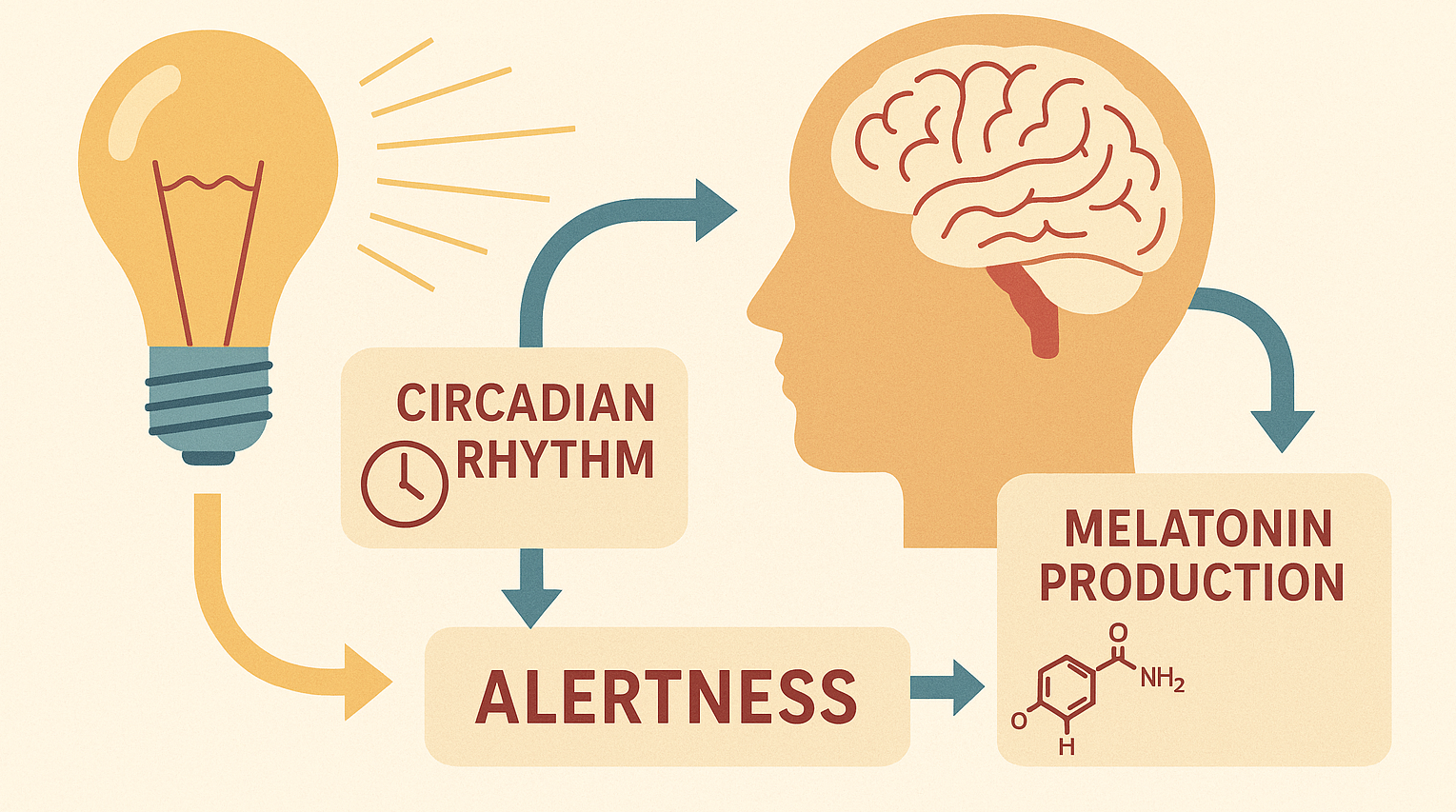September is that tipping point in the year when light really starts to matter. The days get shorter, evenings creep in faster, and suddenly we’re relying on our light bulbs again. What we often forget is that light isn’t just about seeing — it’s about feeling. The right color of light can either calm us down or kick our brains into gear. That’s not just marketing talk — it’s biology.
What “Cozy” Really Means
When people say they want ‘warm lighting’, they’re usually talking about bulbs in the 2200K–2700K range. “K” stands for Kelvin, a unit of temperature used to describe the color of light. Lower numbers = warmer, amber tones (like firelight). Higher numbers = cooler, bluer tones (like daylight at noon).
Here’s where the biology kicks in: warm light has less blue content, which means it doesn’t strongly suppress melatonin, the hormone that helps regulate sleep. That’s why warm light feels like “downtime.” It echoes what our ancestors sat around for thousands of years — campfires, candles, hearth flames.
This is why vintage-style LED filament bulbs are so popular in restaurants, bedrooms, and living rooms. They’re not very bright, but they don’t need to be. They set a tone. They’re for conversation, relaxation, and winding down.
The Color of Work
Now let’s look at the other side: 4000K–5000K light. This is the cool white, “daylight” end of the spectrum. It contains more blue light, which suppresses melatonin and boosts cortisol — the hormone linked with alertness and focus.
There’s a reason offices, classrooms, and workshops often use cooler light. It’s not about aesthetics, it’s about function. Blue-rich light triggers receptors in your eyes that connect directly to your brain’s circadian rhythm. That signal says: “It’s daytime. Stay sharp.”
That doesn’t mean you should fill your whole house with daylight bulbs. Too much cool light at night can actually throw off your sleep. But for garages, kitchens, basements, or anywhere you need to stay focused, daylight bulbs are a biological advantage.
Matching Light to Space
One of the easiest ways to improve your environment is to simply put the right light in the right place. A quick cheat sheet:
Living rooms → 2200K–2700K (warm, cozy, conversation-friendly)
Bedrooms → 2200K (super warm, relaxing)
Kitchens → 3000K–4000K (neutral white for visibility without harshness)
Garages/workshops → 5000K (daylight for focus and detail work)
Offices/classrooms → 4000K–5000K (alertness and productivity)
Think of it like this: warm light for winding down, cool light for winding up.
The Seasonal Factor
As fall and winter close in, we spend more time under artificial light than we’d like. That makes the quality of your lighting even more important. Warm light can help counter the chill of a dark evening, while daylight bulbs help keep you sharp when it’s pitch black outside at 5:00 p.m.
September is the perfect time to reset your lighting. Swap in a few warm vintage bulbs for the cozy corners, and make sure the work zones — garages, kitchens, workshops — are equipped with bright white options. Your brain and body will thank you.
Wrap-Up
Light affects us at a biological level. Warm tones signal rest. Cool tones signal focus. If you use both strategically, you can actually sync your environment to the way your body works.
And if you have more questions, give us a call — we’re kind of obsessed with this stuff. We’ll happily talk your ear off about lumens, Kelvins, and circadian rhythms. For us, it’s about making light work for you.
Not sure where to start? That’s what we’re here for. Bring us the bulb you’re replacing, snap a quick photo, or just tell us what you’re trying to light — we’ll make sure you leave with the right fit.
👉 Or if you’re ready to put this into practice right now, check out our September Luminus sale — every bulb in the collection is 35% off this month.
💡 And stay tuned for our upcoming article on Seasonal Affective Disorder (SAD) and how the right lighting can help fight the winter blues.

